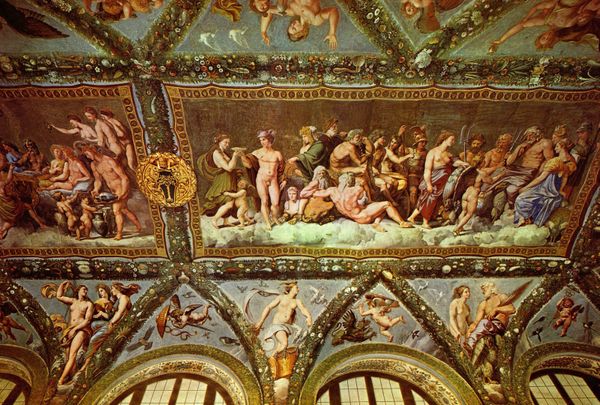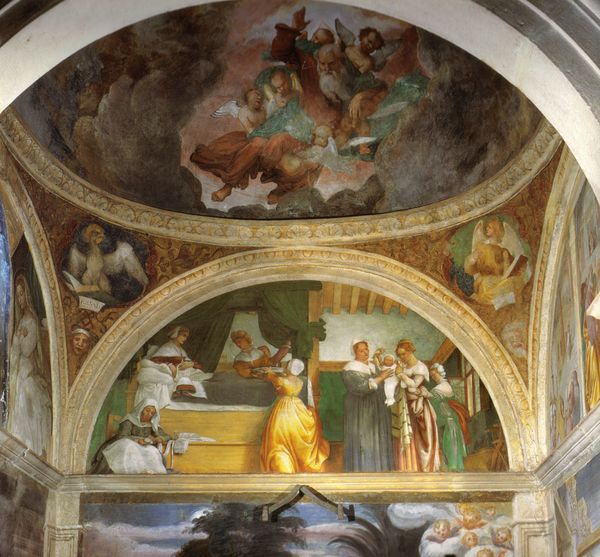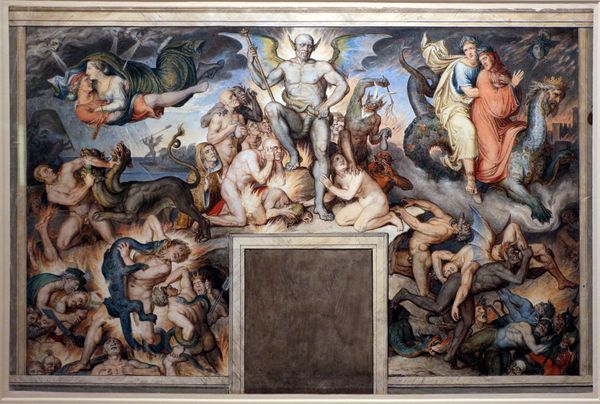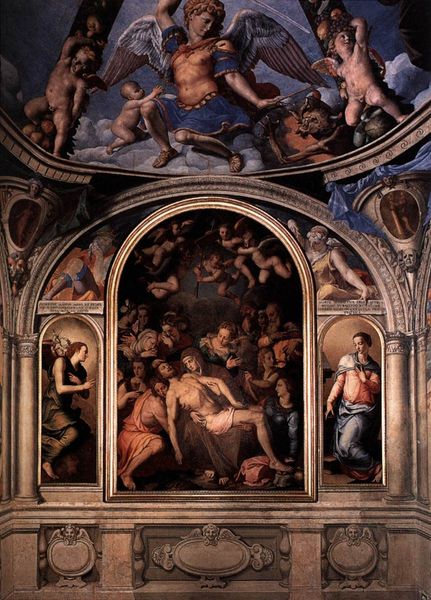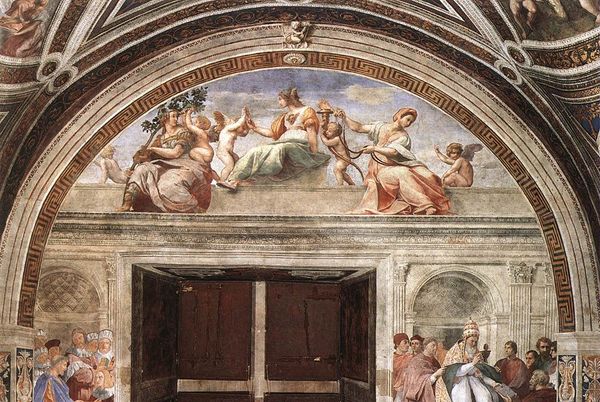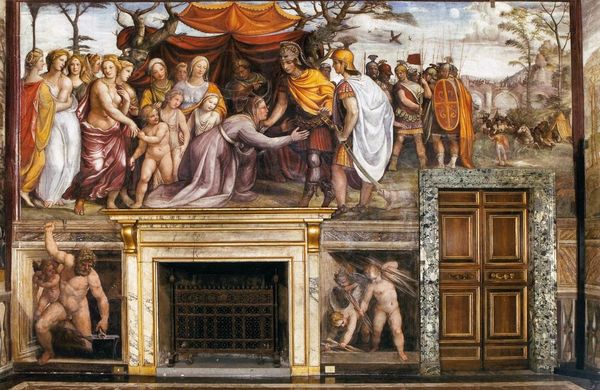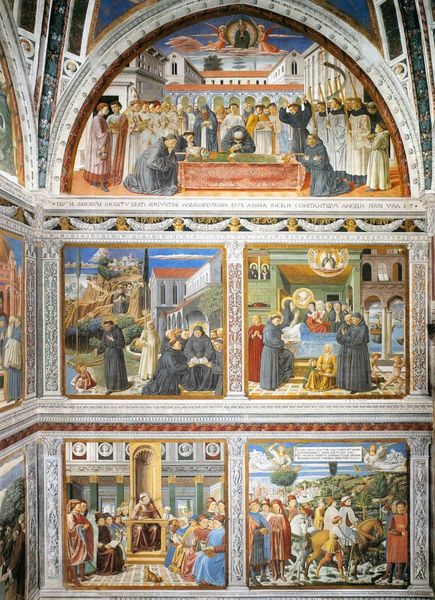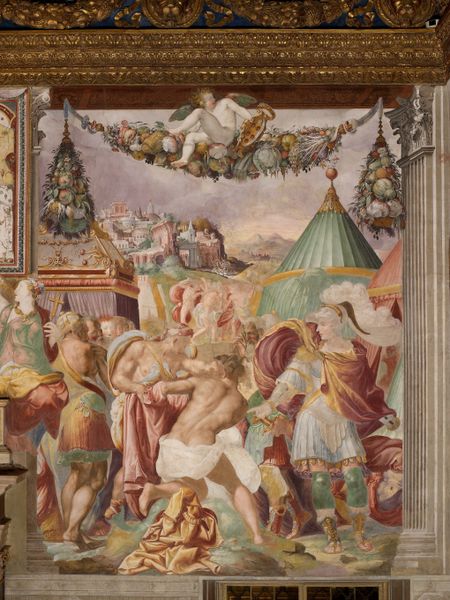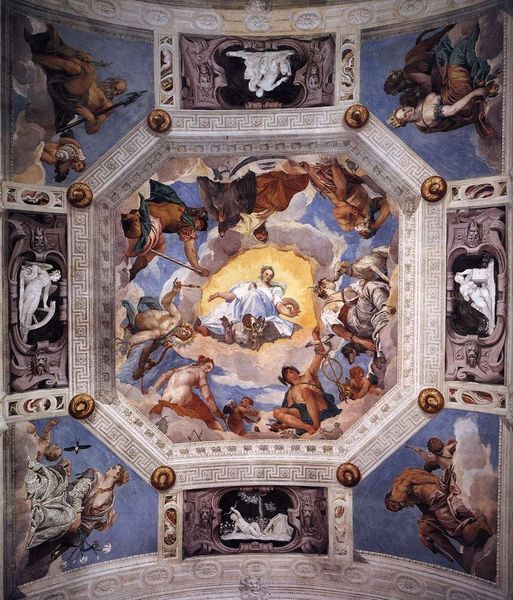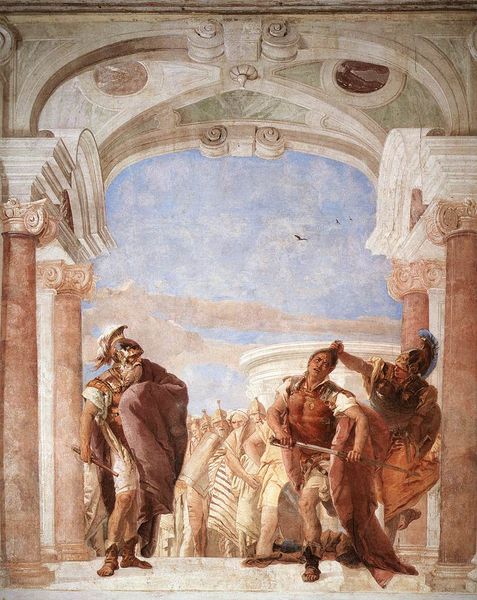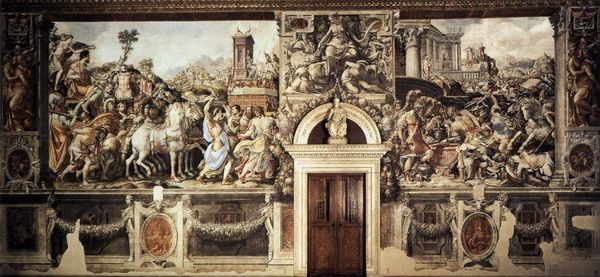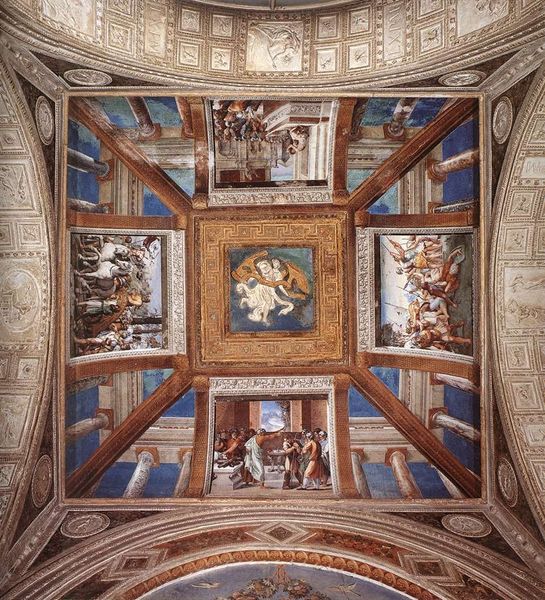
painting, fresco, mural
#
high-renaissance
#
allegory
#
narrative-art
#
painting
#
perspective
#
figuration
#
fresco
#
mythology
#
history-painting
#
italian-renaissance
#
nude
#
mural
Copyright: Public domain
Editor: Here we have "Banquet of Amor and Psyche," a fresco mural made around 1530 by Giulio Romano. It's just packed with figures! What do you see when you look at it? Curator: It’s fascinating to consider this fresco in relation to its location: the Palazzo Te in Mantua. Romano, as court artist, wasn’t just illustrating a mythological scene; he was participating in the Gonzaga family’s project of self-aggrandizement. Think about the materiality of a fresco. It’s not just paint on a wall, it’s pigment integrated into the very structure of the building itself. How does that relate to the idea of permanence and power that the Gonzaga family wanted to project? Editor: So the actual creation of the mural was tied to the display of power of the family living there? Curator: Precisely. The fresco isn't a mere decorative object, but rather a statement of their cultivated taste, their access to skilled labor, and their ambition. The narrative depicted here – the banquet of the gods – directly links to the luxurious feasts and elaborate performances staged by the Gonzaga’s, who were notorious for their excess and opulent lifestyle. And what about the function of this room where we now stand? Editor: I suppose it's like they're saying, "We're the gods of our own domain!" Was this space intended for gathering? Curator: Yes. This would’ve been used as a banqueting hall. Each element—from the procurement of pigments to the artists who worked on-site and the display of wealth through this mythological tableau, all contributes to the socio-economic context of 16th-century Italy. The mural becomes a material manifestation of status. The work that goes into not just this scene but its meaning... Editor: It's more than just a pretty picture then, it’s a performance, like their actual banquets! This gives me a lot to consider regarding this fresco, thank you.
Comments
No comments
Be the first to comment and join the conversation on the ultimate creative platform.
